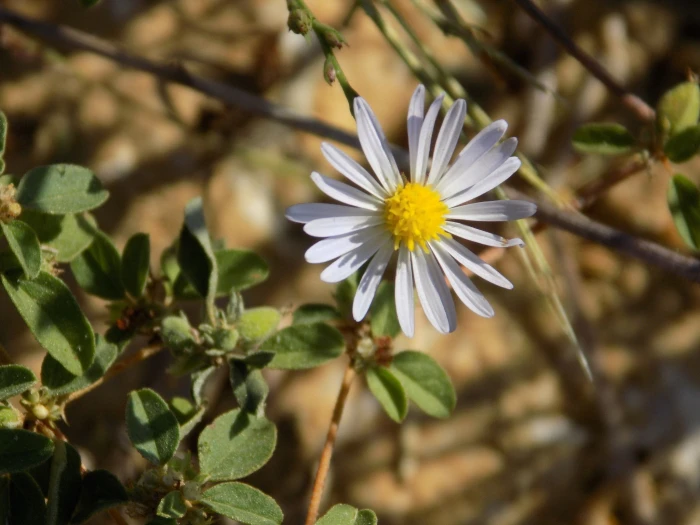Smallhead Doll’s Daisy
(Boltonia diffusa)
Smallhead Doll’s Daisy (Boltonia diffusa)
/
/

© Blake Bringhurst
CC BY 4.0
Image By:
© Blake Bringhurst
Recorded By:
Copyright:
CC BY 4.0
Copyright Notice:
Photo by: © Blake Bringhurst | License Type: CC BY 4.0 | License URL: http://creativecommons.org/licenses/by/4.0/ | Uploader: myrmexflora | Publisher: iNaturalist |
























Estimated Native Range
Climate Requirements for Puyang, China
| This Plant | Your Site | Plant Suitability for Your Location | ||
|---|---|---|---|---|
| • Precipitation | 33" - 66" | 23" | Your precipitation may be insufficient for this plant. Irrigate N" / year. | Irrigate N" / year |
| • High Temp. | 84°F - 96°F | 89°F | Your summer temperatures are normal for this plant. | Excellent |
| • Low Temp. | 19°F - 63°F | 23°F | Your winter temperatures are normal for this plant | Excellent |
This plant should grow well at your location with about N inches per year (Y minutes per month) of irrigation.
Summary
Boltonia diffusa, commonly known as Smallhead Doll’s Daisy, is a perennial herb that is native to a variety of habitats including moist meadows, roadsides, and open woodlands, primarily along the Gulf of Mexico from Texas to Florida, and the lower Mississippi Valley from Louisiana to Illinois, with additional populations in the eastern United States up to Virginia. It typically grows up to 8 inches high and spreads by stolons, forming dense mats. The plant produces numerous daisy-like flower heads with white or lavender ray florets surrounding yellow disc florets, which bloom from late summer to fall and are moderately showy.
Smallhead Doll’s Daisy is valued for its ability to form ground covers in garden settings, providing a carpet of flowers late in the season when many other plants have finished blooming. It is often used in border plantings, native plant gardens, and as a filler in mixed beds. This species is adaptable to a range of soil types, provided they are moist and well-drained. It prefers full sun to partial shade and is relatively low maintenance, requiring minimal care once established. While generally not susceptible to major pests or diseases, it can spread aggressively in favorable conditions, potentially becoming invasive in some areas.CC BY-SA 4.0
Smallhead Doll’s Daisy is valued for its ability to form ground covers in garden settings, providing a carpet of flowers late in the season when many other plants have finished blooming. It is often used in border plantings, native plant gardens, and as a filler in mixed beds. This species is adaptable to a range of soil types, provided they are moist and well-drained. It prefers full sun to partial shade and is relatively low maintenance, requiring minimal care once established. While generally not susceptible to major pests or diseases, it can spread aggressively in favorable conditions, potentially becoming invasive in some areas.CC BY-SA 4.0
Plant Description
- Plant Type: Herb
- Height: 2-4 feet
- Width: 1.5-2.5 feet
- Growth Rate: Moderate
- Flower Color: White
- Flowering Season: Summer, Fall
- Leaf Retention: Semi-deciduous
Growth Requirements
- Sun: Full Sun, Part Shade
- Water: Medium
- Drainage: Medium, Fast
Common Uses
Border Plant, Low Maintenance, Water Garden
Natural Habitat
Moist meadows, roadsides, and open woodlands
Other Names
Common Names: Smallhead Aster, Smallhead Boltonia
Scientific Names: Boltonia diffusa, Boltonia asteroides, Cacotanis ciliata
GBIF Accepted Name: Boltonia diffusa